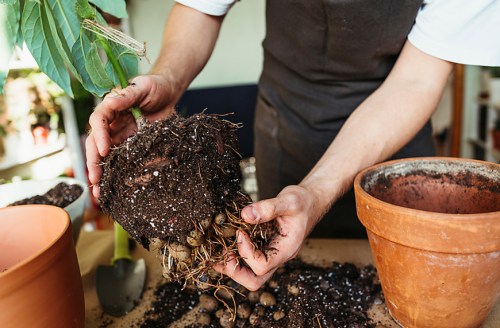4 Most Overlooked Signs It’s Time To Repot Your Plants
When to repot has little to do with the plant's age. Though not an exact science, signs that it's time are often overlooked.

The general rule of thumb is that you should replant young and fast-growing plants every six months to a year, and older plants every few years. But when to do it isn’t an exact science, and other signs that it’s time to repot a plant are often overlooked.
Experts in This Article
Julie Bawden-Davis is the master gardener behind Healthy Houseplants.
“There’s a lot of things to consider besides how long it’s been,” said Julie Bawden-Davis, the master gardener behind Healthy Houseplants. “There are plants that can stay in pots for years without needing repotting, and they actually do better when they’re in the same pots for long periods of time. There are other plants that need to be repotted much more frequently.”
If you notice any of the signs below, you’ll know exactly when to repot a plant. Then grab your soil, follow these helpful instructions, and give your plant babies a healthy new home.
4 signs it’s time to repot your plant
1. Roots are coming out of the bottom of the pot
Look at the bottom of your plant. If its roots are coming out of the drainage hole, it’s run out of room in its current pot and needs to be repotted so it has more space to thrive, says Bawden-Davis. You might also notice roots circling around the top or bottom of your pot, which is another sign it’s rootbound and needs more space.
2. The plant to pot ratio is off
If you have a huge plant hanging out in a really small pot, it’s time to give it an upgrade; it can only thrive in that space for so long. Bawden-Davis says to keep a certain ratio in mind: two-thirds plant height to one-third pot. Not only does sticking to that look better, but it ensures your plant has enough space to stay healthy and grow.
3. Your plant is starting to yellow
There are many reasons for yellowing leaves, from overwatering to too much light. But if you’ve noticed a lot pop up all the sudden, it could be a sign that it’s time to repot. “If it’s rootbound, there’s not enough soil for the roots. So there’s also not enough soil to hold the nutrients for the roots to absorb and get it to the plant,” says Bawden-Davis. When there’s a lack of nutrients, the leaves can yellow.
4. Your plant is losing a lot of leaves
A plant that’s suddenly dropping a lot more leaves than normal could also signal it’s time to repot, says Bawden-Davis. It’s impossible to keep all those leaves healthy when your plant is overcrowded and the roots aren’t able to get enough nutrients to the plant to support it.
The best plants to put in every room in your home:
Oh hi! You look like someone who loves free workouts, discounts for cult-fave wellness brands, and exclusive Well+Good content. Sign up for Well+, our online community of wellness insiders, and unlock your rewards instantly.
Sign Up for Our Daily Newsletter
Get all the latest in wellness, trends, food, fitness, beauty, and more delivered right to your inbox.
Got it, you've been added to our email list.








